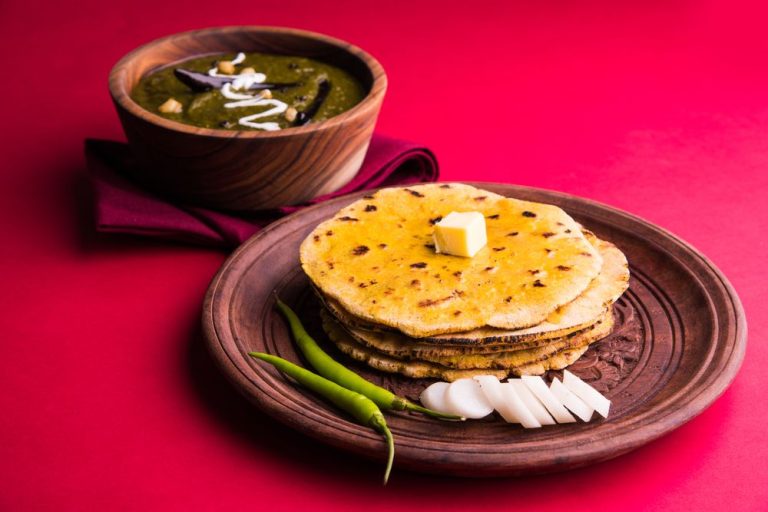Makki Ki Roti

If you’re a fan of flatbreads, you need to try my Punjabi Makki Ki Roti recipe. This corn-based unleavened flatbreads (sometimes called makki di roti) are delicious, slightly sweet from the maize flour or cornmeal, and perfect for a winter lunch or dinner, especially when served with Sarson ka Saag.
Makki ki roti is an unleavened bread that can be made traditionally (in a tandoor), or using a tawa (flat skillet). Makki di roti are popular flatbreads from the land of Punjab. This famous maize flour bread gets its name from the Punjabi term for maize flour: makki ka atta.
While maize is a term for corn, please note that makki ka atta is different than what we know as “cornflour” in India. What we call cornflour is known as “cornstarch” in different parts of the world, while makki ka atta is finely ground cornmeal.
Makki ki roti is most often served with Sarson ka Saag (sautéed and spiced mustard greens) and a few jaggery cubes; this delicious combo is quite famous and is very healthy.
Makki ki roti goes well with any saag, including Palak Saag (made with spinach), bathua saag (cooked with goosefoot leaves) or Chane ka Saag (prepared with chickpea greens). While saag can also be served with Paratha, these maize-flour flatbreads are always the first choice.
Makki ki roti can also be served plain for breakfast with a cup of Chai. You can also make them with some chopped greens like fenugreek (methi), spinach (palak) or goosefoot leaves (bathua) to the maize flour and make parathas. I usually make this for breakfast in the winters.
Makki di roti is a bit heavy on the stomach when compared with other flatbreads, so I like to add carom seeds (ajwain) to help with digestion.
Maize flatbreads have to be cooked properly, or else you might get stomach pain. I learned how to make makki ki roti from my Punjabi mother-in-law, and the method shared here is exactly the way we make it at home.
Hot water is added to the dough to make the makki ka atta more pliable and easier to roll. If you are having difficulty, adding a bit of whole wheat flour (atta) can also make the roti easier to roll.
These maize flour roti can be a little difficult to work with when you first start. As such, I have shown two methods of rolling makki ki roti in the step-by-step photos; use whichever method makes the most sense to you.
I also suggest that you start by making small roti that are easier to handle and then slowly increasing the size of the makki di roti as you become more comfortable.